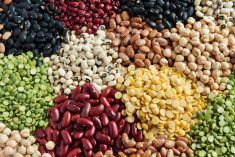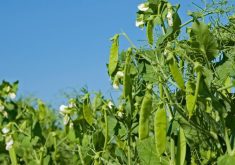Glacier FarmMedia MarketsFarm – As the deadline for the government of India to further extend its tariff-free period for pea imports expired on Feb. 28, there has yet to be any statement regarding levies on the country’s future pea imports.
That silence from the Indian government raised a few questions, noted MarketsFarm senior analyst Mike Jubinville. He wondered if the absence of a statement means the tariff on yellow peas reverts to the 30 to 33 per cent seen before the levy-free period?
“We just don’t know,” he stated.
Read Also

U.S. livestock: Feeder cattle hit contract highs on tight supply
Chicago | Reuters – All Chicago Mercantile Exchange feeder cattle futures and most live cattle futures hit contract highs on…
Statistics Canada reported Canada’s total pea exports in 2024 tallied 2.61 million tonnes, of which 2.09 million were yellow peas. Of that, India acquired 1.42 million tonnes of Canadian pulses of which 1.33 million were yellow peas.
Is China the answer?
“If the policy has changed and reverted back to that, we are probably going to have to find a way to dispose of a pea crop that we have for the next year,” said Jubinville, suggesting that China could be the solution.
“We need to find China to take imports of two million tonnes, maybe more from Canada,” he added, noting that Canada would have to compete with the pea imports from Russia. “Unless we do it at a severely discounted price.”
To Jubinville that could mean slashing pea prices by up to C$2 per bushel. As of March 3, Prairie Ag Hotwire listed yellow peas in Western Canada at C$9.75 to C$11.20/bu. delivered for 2024/25 and new crop prices at C$8 to C$10.
As for India, he speculated one reason for the Indian government being quiet on its pulse levies could be that it’s waiting to estimate the likely yields of the country’s rabi crop.
Lentils
In the meantime, India’s tariff-free period for lentils is set to expire at the end of March. As with yellow peas, Jubinville stressed there’s no clear direction coming from New Delhi and there remains the possibility of red lentil tariffs returning to 20 to 30 per cent.
“Indian red lentil prices have been below the minimum support level for two years. In support of India’s farmers, of which there are a couple of hundred million, (the government) may put those tariffs back just to support lentil production in India,” he suggested.
Jubinville added that green lentils might be spared any return of levies as pigeon pea prices in India are holding up fairly well. However, he emphasized this is merely talk within the trade, that the Indian government needs to make statements about its levy-free periods on different pulses.
“We’re in limbo at the moment,” he stated. “I don’t see much business getting done at the present time. It’s pretty quiet from a merchandiser’s perspective.”
U.S. tariffs
The proverbial wrench was thrown into the mix with the United States imposing 25 per cent tariffs as of March 4 on most of the goods it imports from Canada and reducing that market.
“We’re running out of markets to put this stuff,” said Jubinville.

















